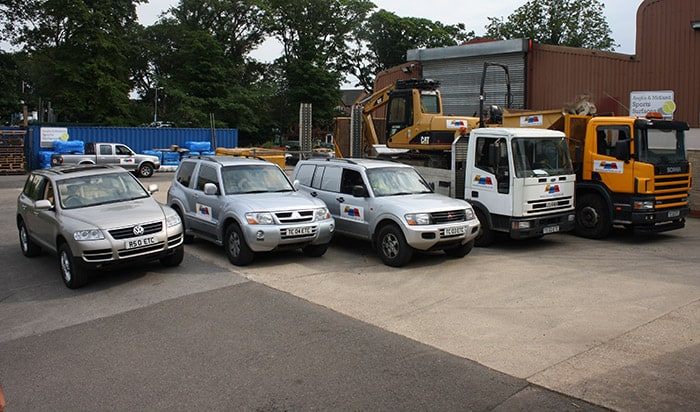How to build a first-class tennis court
Building a tennis court that will play well and last for many years calls for a rigorous proven approach to construction and the use of the best materials in sufficient quantities. The process of construction under the surface of the court is critically important to the court's quality and life.
We are members of SAPCA, the UK's sports and play constructors' association for the UK.
We build to specifications that exceed the minimum standards laid down for the tennis court construction industry. Detailed below is an example of the process that is undertaken in the construction of an average sports surface.
STAGE ONE
We excavate the site, using a laser-controlled machine to create a fall in one direction.
STAGE TWO
If necessary, we lay a perforated plastic pipe in stone to the perimeter to catch water coming from above and extract water from the court's base. We lay a geotextile weed barrier on the excavated base
STAGE THREE
We lay pressed concrete edgings to the perimeter on concrete with stone under, to allow water out to the drain
STAGES FOUR AND FIVE
We roll 40 - 20mm granite to consolidate at a depth of 150mm. For clay sites, we lay a capping layer of gritty stone to a depth of 100mm to stop the clay shrinking and moving.
We set galvanised trapdoor lid net post sockets in concrete.
STAGE SIX
We drill holes in the ground and set the fence posts in concrete, all the way down. The edgings are then haunched all the way around so that the fence foundation acts as a pile foundation for the edge too.
STAGES SEVEN AND EIGHT
A 40mm depth of 20mm play base macadam is laid and rolled. The next day, a 6mm open-textured play course is laid by our unique powered straight-edges and rolled to a fine finish.
We apply an acrylic or polyurethane finish on top of the macadam for a Pladek service. Alternatively, we lay artificial grass carpets on top for Savanna, Tenniturf or Sporturf.


